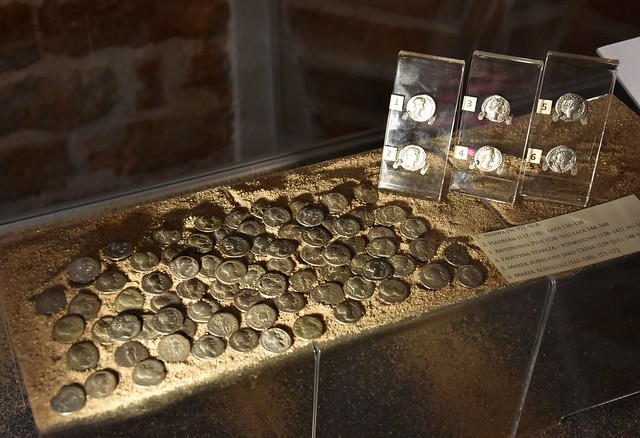
PREV ARTICLE
NEXT ARTICLE
FULL ISSUE
PREV FULL ISSUE
CONTEMPORARY COUNTERFEIT ROMAN DENARIIFound via The Explorator newsletter is this article from Poland about contemporary counterfeit Roman denarii. -Editor
Archeologists from the University of Warsaw have been analysing the coins produced outside of the empire in today's Poland, Ukraine and Belarus and have concluded that they are fake. Hundreds thousands of silver Roman denarii have been found in the areas inhabited by Goths and Vandals in the beginning of this era. Up until now, historians were convinced the coins came from the Empire itself. But Prof. Arkadiusz Dymowski, who together with Dr. Kyrylo Myzgin is looking into the case told PAP: "It turned out that some of them are fake. The coins were silver plated or made of an alloy that was supposed to resemble silver." On the eastern fringes of the Roman Empire, from the present day east Germany, through Poland, Ukraine and up to western Russia, denarii were used very commonly.  Dr. Myzgin said: "We believe that in the first centuries of our era, in the east of the Empire, the exchange of goods using money - denarii - took place more often than it was thought. "In recent years, several workshops were discovered in Ukraine, in which false denarii were produced. We suppose that it is only a matter of time before we find them in Poland."  However, the everyday ancient shopper would have a hard time telling the real money from the fake. The coins were individual pieces of art, minted with hand-made stamps. Therefore, the coins were slightly different in appearance and weight, even by 1-1.5 grams. These are too small differences to be easily captured by an ordinary coin user assessing the authenticity of the money he traded. To read the complete article, see:
Wayne Homren, Editor The Numismatic Bibliomania Society is a non-profit organization promoting numismatic literature. See our web site at coinbooks.org. To submit items for publication in The E-Sylum, write to the Editor at this address: whomren@gmail.com To subscribe go to: https://my.binhost.com/lists/listinfo/esylum All Rights Reserved. NBS Home Page Contact the NBS webmaster 
|
